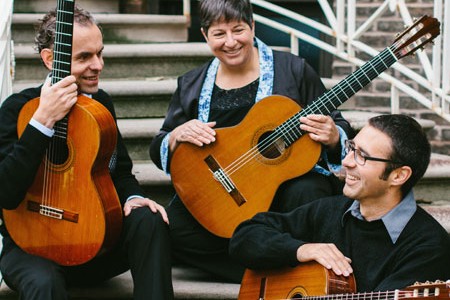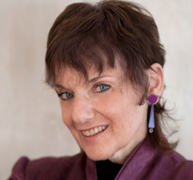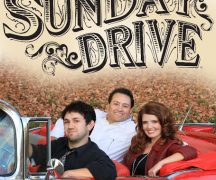From PEMBERVILLE OPERA HOUSE
The Avanti Guitar Trio will perform a Live in the house concert, Saturday, April 7, 7:30pm in the historic Pemberville Opera House
Tickets are $12 at the door and from Beeker’s General Store, or by contacting CarolBailey at 419-287-4848, carol@pembervilleoperahouse.org or at www.pembervilleoperahouse.org.
To benefit the opera house elevator fund, the Historical Society will host a pre-show dinner at Higher Grounds in Downtown Pemberville. From 5:30-7 p.m. BBQ Chicken or Riblet, Baked Potato, Choice of Salads, Corn, Roll and Butter and Choice of Beverage Cost $9.95 and tax with homemade pie ala carte. Reservations not necessary but appreciated. Call 419-287-3274
The Avanti Guitar Trio is a world-class chamber ensemble whose performances are exciting, approachable, and welcoming. Guitarists Jason Deroche, Julie Goldberg, and Wesley Hixson blend together pristine technique and sensitive interpretation, earning critical acclaim for their engaging concerts and varied programming.
AGT repertoire ranges from the Baroque to Contemporary, and features newly composed music, engaging transcriptions of classical masterpieces, and an occasional rock/pop or jazz tune.
Based in Chicago, Illinois, AGT has performed for the Waukegan Chamber Society, Chicago Composers’ Consortium, Illinois Wesleyan University, Quincy University, Church of Beethoven, and Harold Washington Chicago Public Library. AGT has shared the stage with renowned guitarists Benjamin Verdery, William Coulter, Las Guitarras de España, and Earl Klugh.
Formed in 2010 the Avanti Guitar Trio continues to expand the guitar trio repertoire by composing/transcribing new works and collaborating with established and upcoming composers.
The Avanti Guitar Trio opens their program with a transcription of Luigi Boccherini’s “Introduction and Fandango.” Boccherini, an Italian composer and cellist spent much of his career in Madrid, Spain. He composed chamber works for royalty and enjoyed steady employment as a composer and performer. The Spanish Nobleman, Marquis de Benavente, was an amateur guitarist and fan of Boccherini’s string quartets. He commissioned the composer to write guitar parts for his favorite chamber works so that he could participate in playing Boccherini’s chamber music. The Marquis paid Boccherini 100 francs for each quartet the composer arranged. Introduction and Fandango was originally composed as the last movement of Boccherini’s Quintet, Op. 40, No. 2. Reworked for guitar and string quartet, it became the final movement of the composers Guitar Quintet No. 4 in D major.
Wesley’s piece, “Tidal Light” was inspired by the popular Youtube video “Flaring Up, Surfing with Flare.” The video features world renowned surfer Bruce Irons. “Tidal Light” is an aural impression of ocean sounds, from the shushing monotony of tidal waters overlaying the shoreline to the effervescence of whitecaps crashing. A delicate main theme is shared between two guitars as one echoes the other while the third guitar plays a supportive and a rolling ostinato figure. In the video “Flaring Up,” surfer Bruce Irons experiments with road flares strapped to the back of his surfboard as he catches a wave at twilight, creating an ethereal light show.
“Tango Diabólico” blends elements of jazz harmonies, classical form and heavy metal riffs to create a devilish tango. Composers traditionally avoid using the augmented fourth interval, called the forbidden tri-tone or the “devil in music.” In “Tango Diabólico” Hixson uses the tri-tone consistently creating an eerie sense of foreboding. After an intense main theme, it appears that an ominous Lento section is about to unfold when suddenly a shift to a lyrical and nostalgic theme begins. With it’s eclectic conglomeration of styles, the Tango Diabólico expands on the ideas of the great Nuevo Tango composer Astor Piazzolla and is foretelling example of where the style may be evolving.
George Bizet composed the opera “Carmen” between the years 1873-74. It received a lack luster reception at its premier performance. Parisian audiences thought the story of the fatal love between a gypsy woman and a renegade soldier was too sordid for general consumption, and that the music was as dull and obscure. Non-Parisians soon recognize the composer’s genius. Peter Tchaikovsky pronounced “Carmen” a masterpiece that would become “the most popular opera in the world!” Tchaikovsky was right. Ernest Guiraud, inspired by the popularity of Bizet’s Opera derived two orchestral suites based on instrumental interludes and arias heard through-out the work. The Aragonaise is the flamenco-tinged Prelude to Act IV. The Intermezzo is the Prelude to Act III, originally in which solo woodwinds play a beautiful melody as the harp performs an arpeggiated accompaniment. “The Seguedilla” is an orchestral transcription of the title character’s, Carmen’s, Act I aria. Les Toréadors depicts a festive parade of bullfighters and incorporates the famous “Toreador Song,”
“Agua con Gas,” composed by Swedish Composer Jürg Kindle is a lively tune that effectively reflects the translation of the title, “Sparkling Water.” Jürg is a master of creating unique sounds on the guitar and uses pizzicato, strumming techniques, and interesting harmonies in this effervescent tune.
“La Misionera” is the most famous composition of Argentinian composer and pianist, Ferdinando Bustamente. The title refers to a region of Latin America that extends between Paraguay and Brazil. Originally composed for keyboard, this lively work has been arranged for and performed by a wide variety of solo and ensemble instrumentalists. In this arrangement, Julie Goldberg throws the main melody back and forth between voices, playing with an echo effect and highlighting the interplay between the three musicians.
American composer Ronald Pearl draws upon the Old Testament to inspire his composition “Jacob’s Ladder.” Ronald writes: “The title, it is more suggestive than programmatic. Through-out the piece there is a lot of interlocking of the three guitars, musical figures spiraling upwards, arpeggios ringing across the trio, as well as unison chord articulations – these all call to my mind ladders, and in general, they are ever-ascending. Jacob’s dream, imagining a ladder to heaven – or for any humanist, a ladder/path to a higher, more peaceful place – these were the thoughts as I composed this. And, the fact that the “ladder” is an interweaving of the three guitars, or three sets of hands, implies a kind of cooperation and community that is needed to ascend to a higher place. We don’t climb alone, and we ascend and grow with others. So, one can take this a musical illustration of the Biblical ladder, or as a metaphor for how ensembles and people work together to grow. “
“Danza rutual del fuego, the Ritual Fire Dance” comes form Maneul de Falla’s 1915 ballet “El amor brujo, The Bewitched Love.” In de Falla’s ballet a young gypsy girl, Candela, is haunted by the ghost of her dead husband. To get rid of the ghost, the gypsies make a large circle around their campfire at midnight. Candela starts dancing and the ghost appears. As they dance together, whirling around faster and faster, the ghost is drawn into the fire, and vanishes forever.
Avanti guitarist Jason Deroche fuses an Old World tradition with an understanding of pop culture. Playing everything from Bach to Beatles, Deroche leaves his audiences delighted with his relaxed performance style and candid sense of humor. Jason has shared the studio and stage with artists ranging from members of 80s supergroups Survivor and Toto to some of Chicago’s finest classical musicians. Past seasons have included appearances as a soloist with the Cherokee Symphony, the Mount Prospect Community Band, and the Oberon Chamber Orchestra. Through an obvious self-discipline in all musical matters, the self-taught Deroche has developed an unmatched level of virtuosity and artistry. Deroche is highly sought after as an instructor of the guitar. Students of all ages and abilities enjoy his unique insight and relevant instruction. He and his wife Sherri play in a guitar & violin duo called Ten Strings.
Named Guitarist of the year by Classical Guitar Alive, internationally-broadcast radio program,
Julie Goldberg is the first guitarist to receive a Doctorate in Music Performance from Northwestern University, and holds degrees from the Chicago Musical College, and College-Conservatory of Music at the University of Cincinnati. Julie has performed solo recitals in New York, Cincinnati, St. Louis, Michigan and Washington, D.C. and has been featured on the internationally known Dame Myra Hess Concert Series. Dr. Goldberg is on the faculty of North Park University and VanderCook College of Music. She is a guest artist at the Interlochen Music Academy, CCM Summer Guitar Workshop, Wisconsin Center for Music Education, Illinois Music Education Association, Mid-America Guitar Ensemble Festival and Michigan Music Conference. Over seas she has taught master-classes at the Vietnam National Academy of Music, Hanoi and the Ho Chi Minh City Conservatory of Music. She recently co-authored the book, 100 Classical Guitar Lessons, which is published by Hal Leonard. Her educational guitar ensemble compositions are published by Guitar Chamber Music Press.
As a soloist, chamber musician and composer, Wesley Hixson writes accessible classical music for guitar paying homage to his early influences of classical, prog-rock, metal, jazz, and folk music from around the world. While much of his music draws inspiration from nature, psychology and film, he often borrows form and harmony techniques from classical, jazz and pop as a foundation for his compositions. All of these elements combined in a transparent blend of styles create stirring, new music for the guitar. His music is published by Guitar Chamber Music Press. Over the years Wesley has made several recordings with various groups, as well as a solo recording titled CAPRICE, which features his original solo guitar compositions.





